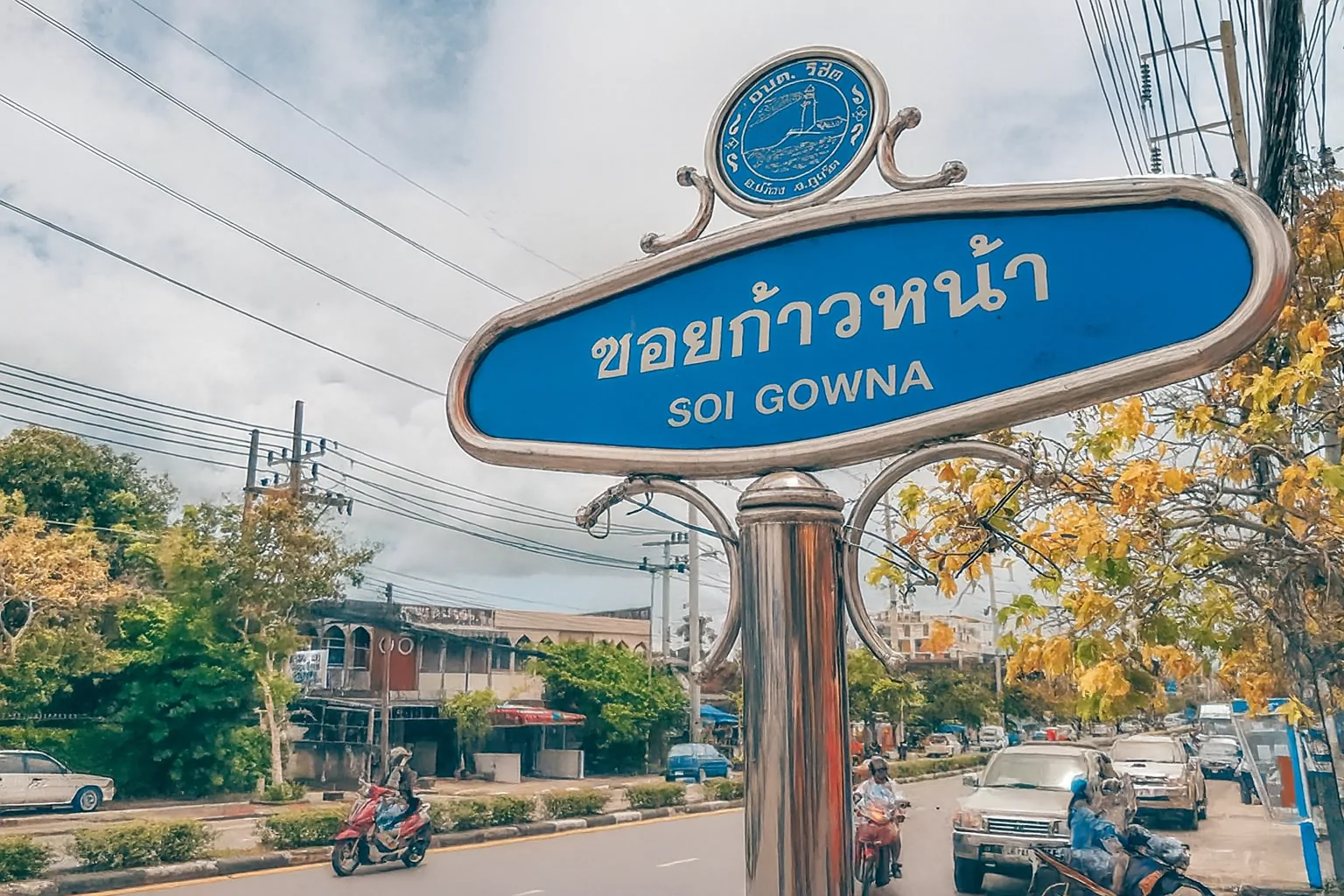We’ve heard that it’s difficult to figure out addresses in Thailand. How do you navigate them and how should you correctly write your address in Phuket?
Insider's Response
That’s true — a Thai address is a bit like Buddhist philosophy: it can only be understood through experience. Even locals don’t always navigate well by addresses. The most reliable way is to drop a pin on the map. Let’s break down the rest below.
Why it’s difficult to navigate by address in Thailand
Let’s imagine a simple situation: you need to tell a taxi driver where to go. You give them an address. But the driver will usually only understand the street name — house numbers are often confusing. If you’re going to a well-known tourist spot (a beach, park, or shopping mall), just say the name — that’s the fastest way to be understood.
To avoid problems, we recommend using taxi apps. You can read more about them here. In the app, you can select your exact pickup location on the map, so you won’t need to explain the route to the driver.
There are several reasons why addresses in Phuket can be confusing:
- House numbering is often non-sequential. In Phuket, house No. 1 might stand next to house No. 72/44, because numbers were assigned as buildings appeared — wherever there was free space, not in order.
- Numbers are sometimes hard to read on building facades.
- Street names and house numbers are not always displayed. Street names are usually only shown at the entrance to a lane, and some streets still don’t have names at all.
- Rapidly developing resort infrastructure adds even more chaos — new roads, renamed streets, and “internal” lanes may appear on maps differently.
- New side streets (soi) are often added later, and between them you might find “fractional” numbers like soi 7/1 or soi 7/5 between soi 7 and soi 9.
- Some small roads may have no official name or may simply be called “soi.”
- Addresses often include a “village” (muban/moo) — which usually refers not to a literal village, but to an administrative area. This part of the address might be unfamiliar to people from outside the neighborhood.
Because of all these factors, even long-time Phuket residents can have trouble finding their way around by address.

Administrative Division of Phuket (Districts, Streets, and Lanes)
To write an address correctly, it’s important to understand how Phuket is organized.
- Province (Changwat)
Phuket is one of Thailand’s provinces. The name Phuket refers both to the island itself and to the province, which also includes several smaller islands. - District (Amphoe)
Phuket Province is divided into three districts — Mueang, Kathu, and Thalang. - Subdistrict (Tambon)
Each district is divided into subdistricts or local communities (tambon). For example, Phuket addresses often include Tambon Wichit, Tambon Patong, and others. You can read more about each one in the Phuket Districts section. - Village (Muban, abbreviated “Moo” or “M.”)
These are “blocks” or “groups of houses” within a subdistrict. In Phuket, only Patong and Phuket Town are considered cities — the rest are classified as mubans, which are numbered in addresses. You’ll often see “Moo” or “M.” followed by a number — for example, Moo 2 (M.2). - Street / Road (Thanon) and Lane / Alley (Soi)
- Thanon (Th / Rd / Road) – a main street or major road.
- Soi – a side street or lane branching off from a main road. They are numbered: Soi 1, Soi 2, and so on. Even and odd sois are usually located on opposite sides of the main road.
- Larger sois often have their own names and may even contain smaller side lanes.
- Fractional numbering sometimes appears in addresses, such as Soi 7/1 — which is a lane between Soi 7 and Soi 9.
In Thailand, addresses are written from small to large, starting with the house number — which might feel unusual. A full address structure looks like this: House number → Village/Muban → Lane/Soi → Street/Thanon → Subdistrict/Tambon → District/Amphoe → Province/Changwat → Postal Code
For condominiums and townhouses, the apartment number is added after a slash.
Examples:
- 3/45, 41 Soi Samkong 1, Ratsada, Amphoe Mueang, Changwat Phuket 83000 – condominium address
- 482 Phuket Road, Tambon Talat Yai, Amphoe Mueang Phuket, Changwat Phuket 83000 – building address
We hope this helps you better understand how Thailand’s administrative divisions work — don’t get lost!
